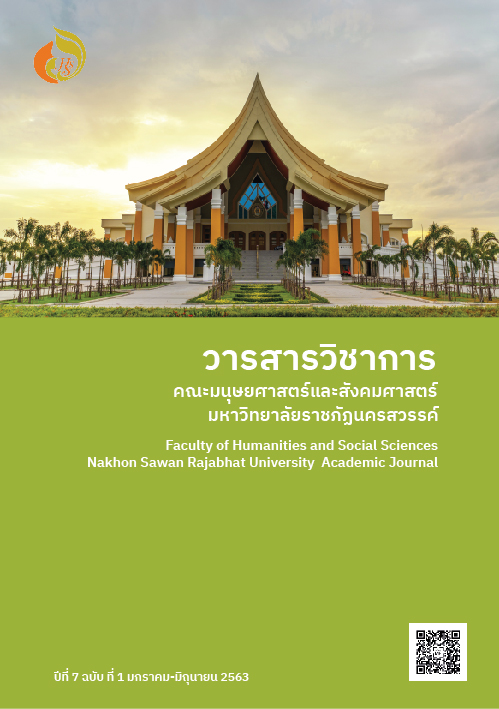Juvenile Repeat Offenders Guidelines for the Prevention and Correction of Juvenile Repeat Offenders in an Offense Relating to Drugs Based on Factors that Predict the Criminologist
Main Article Content
Abstract
Abstract
The objective of this research is to study criminological factors that can predict juvenile recidivism in drug-related offenses, as well as to study the problem and prevent recidivism of juvenile offenses in a case about drugs on the basis of the influence of the criminology. This research is a survey research that the sample used in this study were 1) the juvenile recidivism in crimes relating to drugs in 16 training centers, youth 265 who were selected by multistage sampling and 2) The qualified person who has the knowledge and ability about preventing and fixing problems with drugs in children and young people from 25 purposively selected then the tools used in this research are: 1) a questionnaire to research ways to prevent and recidivism of juvenile offenses in a case about drugs. Factors that predicted by the criminologist. And 2) Interviews experts about ways to prevent and tackle recidivism of juvenile offenses in a case about drugs. Data analysis in this research that qualitative content analysis and quantitative data using statistical analysis by analyzing the frequency, percentage, average, standard deviation. And logistic regression analysis.
The research found that the study analyzed the criminology. The ability to predict recidivism of juvenile offenses in a case about drugs found that predictor variables that significantly predict recidivism in crimes related to drugs, including variable theory fellowship with friends (B = 1.226 **). Basic parameters while the age of the perpetrator (B = -. 522 **) variables are lives with his mother (B = 2.969 **) basic parameters of his career (farmers) (B = 3.279 **). And the basic parameters of a father (employee / department stores) (B = 3.008 **).
The study seeks to prevent and tackle recidivism of juvenile offenses in a case about drugs on the basis of the influence of factors, the criminologist appear below.
1) Family should care for juvenile offenders to talk, understand and solve problems so reduce the incentive to make juvenile offenders. As well as providing opportunities for children and young people to do things that benefit and the values to life in a good way.
2) School / teachers should know understanding about the harms of drugs. The lecture on the subject of the proper conduct with children and youth.
3) Communities / monastery should be involved in follow-up care and monitoring behavior but the watchdog behavior. As well as projects and activities that encourage youth participation,providing opportunities for children and young people in the community can live with it happily as learning to work, honestly and moral training
4) Organizations or related personnel involved should organize activities that encourage children and youth to have correct decision-making skills and appropriate areas for treatment, rehabilitation and specific remedies. Supervise and monitor child or youth welfare, including family with emphasis on vocational training. In addition, the penalty should be added to the accused of drug offenses including capitalist groups or supporters, as well as a prevention and suppression of sources of illicit behavior.
Article Details
References
กรมพินิจและคุ้มครองเด็กและเยาวชน. (2555). รายงานสถิติคดีประจำปี 2555. มปท.
จุฑารัตน์ เอื้ออำนวย. (2551). สังคมวิทยาอาชญากรรม. กรุงเทพฯ: จุฬาลงกรณ์มหาวิทยาลัย
ชาญคณิต กฤตยา สุริยะมณี และอุนิษา เลิศโตมรสกุล. (2553). การกระทำผิดซ้ำของเด็กและเยาวชนในคดีความผิดเกี่ยวกับทรัพย์ในประเทศไทย:แนวทางในการป้องกันและแก้ไขโดยอาศัยปัจจัยที่เป็นตัวทำนายทางด้านอาชญาวิทยา (รายงานการวิจัย). กรุงเทพฯ: สำนักงานกิจการยุติธรรมกรรมพินิจและคุ้มครองเด็กและเยาวชน กระทรวงยุติธรรม
ประชา ประสงค์ธรรม. (2557). แนวทางการป้องกันการกระทำผิดซ้ำในคดียาเสพติดของผู้ต้องขังชายในเรือนจำจังหวัดพระนครศรีอยุธยา (รายงานการค้นคว้าอิสระ ศิลปศาสตรมหาบัณฑิต สาขาวิชายุทธศาสตร์การพัฒนา). พระนครศรีอยุธยา: มหาวิทยาลัยราชภัฏพระนครศรีอยุธยา
รัชนีกร ต๊ะม่าน. (2557). แนวทางการป้องกันและแก้ไขการกระทาผิดซ้ำของเด็กและเยาวชนในจังหวัดแม่ฮ่องสอน (รายงานการค้นคว้าอิสระ รัฐประศาสนศาสตรมหาบัณฑิต). เชียงใหม่: มหาวิทยาลัยเชียงใหม่.
Agnew and White, (1992). Am Empirical Test of General Strain Theory, Vol.13(4) ; 475.
Hirschi, Travis. (1969). Causes of delinquency. Berkeley and Los Angeles. CA: University of California Press
Jeffrey. C. Ray. (1990). Criminology. New Jersey: Prince Hall.
Laub, John H., and Robert J. Sampson. (1993). Turning points in the life course: Why change matters to the study of crime. Criminology. 31: 301-25.
Patterson, G. R., DeBaryshe, D. & Ramsey, E.(1989). A developmental perspective on antisocial behavior. American Psychologist, 44. 329-335.
Schumacher, M., & Kurz, G.A., (2000). The 8% Solution: Preventing Serious, Repeat Juvenile Crime. Thousand Oaks, CA: Sage Publications. 4-5. 41-42.
Siegel Larry. (2000). Criminology. Seventh edition. California: Wadsworth/Thomson Learning.
Williamson, G.M., & Silverman, J.G. (2001). Violent against female partner: Direct and Interactive effect of family history, communal orientation, and peer-related variables. Journal of Social and Personal Relationships. 18(4). 535-549.


